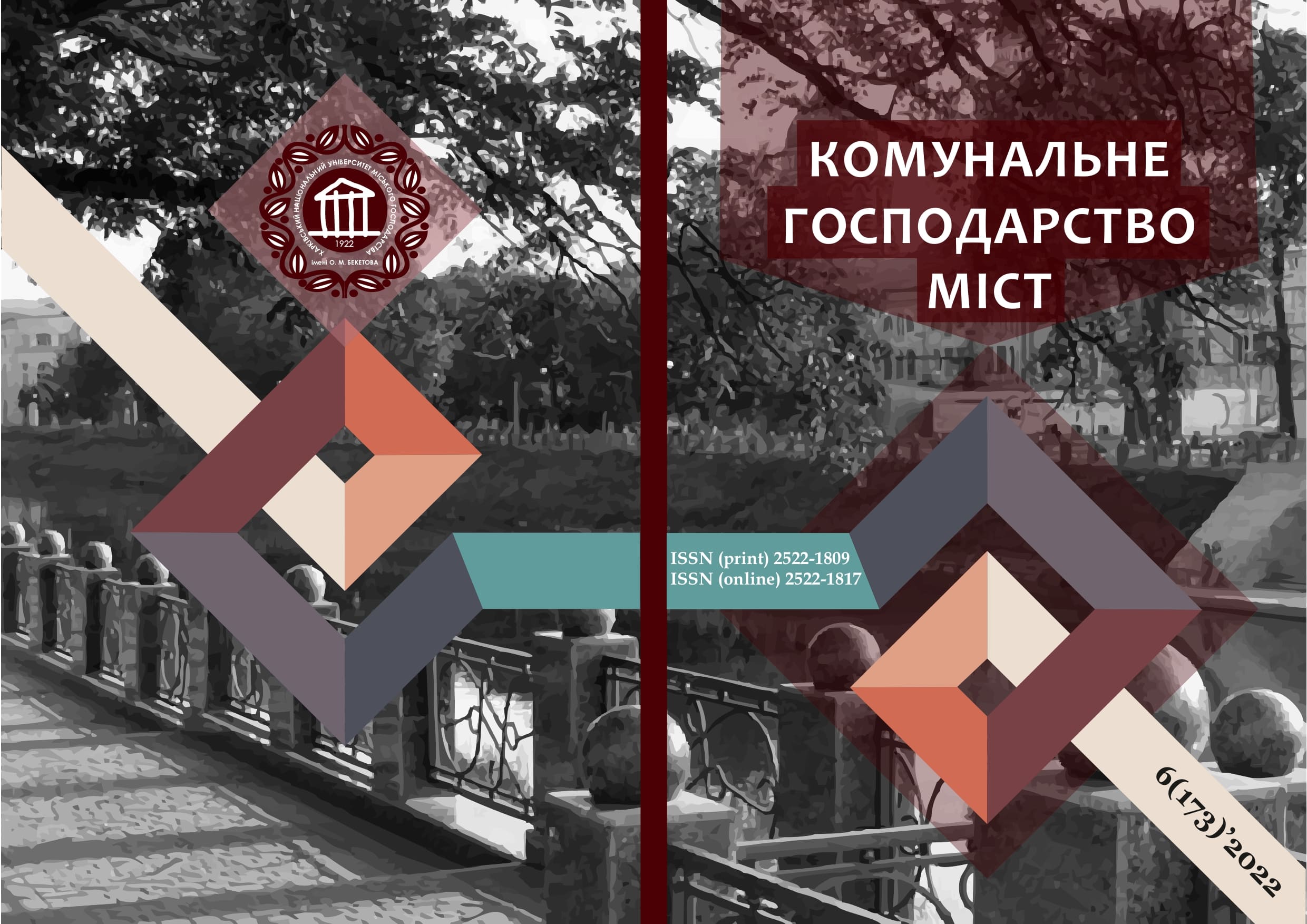НЕЙРОМАРКЕТИНГ ЯК ІНСТРУМЕНТАРІЙ АНАЛІЗУ ВІЗУАЛЬНОГО КОМФОРТУ ШТУЧНОГО ОСВІТЛЕННЯ ПУБЛІЧНИХ ПРОСТОРІВ
DOI:
https://doi.org/10.33042/2522-1809-2022-6-173-61-67Ключові слова:
візуальний комфорт, функція візуального комфорту, нейромаркетинг, архітектура, емоційно-естетичний рівень сприйняттяАнотація
Автором пропонується новий підхід до аналізу візуального комфорту нічного освітлення. Цей підхід ґрунтується на поданні сприйняття видимого середовища як поетапного психічного процесу. В статті розглядаються перспективи використання парадигми нейромаркетингу як інструментарію оцінки емоційно-естетичного рівня сприйняття реципієнтами нічного освітлення відкритих громадських просторів.
Посилання
Fomenko O.A. (2012) Videoecology of the architectural environment: monograph. H.: HNAGH, 370 p.
Fechner, Gustav (1882) Theodor Revision der Hauptpuncte der Psychophysik. Nachdruck der Ausgabe Leipzig.
Külpe, Oswald Grundriss der Psychology. Lpz., 1893.
Vygotsky L.S. (1968) Psychology of art. M: Art, 576 p. ill.
Lotman Yu. M. (2010) People and signs. / In the book. Lotman Yu. M. Semiosphere. - St. Petersburg: Art-SPB, P. 6.
Nesterov, A. (2020), Technology as Semiosis, Technology and Language, 1(1), 71–80, DOI: https://doi.org/10.48417/technolang.2020.01.16.
Engelmeyer P.K. (2010) Theory of creativity. Moscow: Book house "LIBROKOM", 208 p.
Lyotard J.-F. (1998) Postmodern state. Moscow: Institute of Experimental Sociology, St. Petersburg: Aleteyya, 159 p.
Losev A.F. (1995) The problem of the symbol and realistic art. Moscow: Art, 320 p.
Morris C.W. (2001) Foundations of the theory of signs. Semiotics: Anthology / Stepanov Yu.S. (Comp.). Ekaterinburg: Business book, 702 p. pp. 45–98.
Nesterov A.Yu. (2021) Semiotics as methodology and ontology. Semiotic research. Semiotic studies. V. 1, No. 1. S. 6–13. DOI: http://doi.org/10.18287/2782-2966-2021-1-1-6-13.
Lewis, D. (2015) Neuromarketing in action. How to get into the mind of the buyer / David Lewis; per. from English. Maria Matskovskaya: Mann, Ivanov and Ferber; Moscow; ISBN 978-5-00057-332-7.
Yankovskaya Yu. S. (2003) Semiotics in architecture - dialogue in interaction: The place of semiotic research in modern architecture theory. - Yekaterinburg: Ural Publishing House. un-ta, 225 p.
Rappaport S.Kh. Art and emotions. - M.: Progress, 1968. S. 33.
Simonov P.V. (1966) What is emotion? M.: Nauka, S. 52.
Kravets V.I. (1972) Structure and functions of color harmony in the composition of residential buildings: - Diss. ... cand. arch. Kh. P.10.
Reikovsky Ya. (1979) Experimental psychology of emotions. - M.: Progress, S. 36, 48.
Ruuber Georg. Ilu seadu sparasustest. Tallin, 1965, ck. 55-57.
Abulkhanova K.A. (1973) On the subject of mental activity. - M.: Mir, S. 57.
Harrell, Eben. (2019) Neuromarketing: What You Need to Know. January 23, 2019. Harvard Busines Review. https://hbr.org/2019/01/neuromarketing-what-you-need-to-know.
Hsu M. (2017) Neuromarketing: Inside the Mind of the Consumer. California Management; 59(4):5-22. doi:10.1177/0008125617720208.
Lindström, Martin. (2009) Buyology. random house. 272 p. ISBN 9781847940131.
Lewis D. (2015) Neuromarketing in action. How to get into the mind of the buyer: Mann, Ivanov and Ferber; M. 276 p.
Fortunato V. C. R., Giraldi J. M. E., de Oliveira J. H. C. A (2014) Review of Studies on Neuromarketing: Practical Results, Techniques, Contributions and Limitations. Journal of Management Research. T. 6. No. 2. S. 201-220.
Ariely D., Berns G. S. (2010) Neuromarketing: the hope and hype of neuroimaging in business. Nature Reviews Neuroscience. T. 11. No. 4. S. 284-292.
Maslow A. H. (2012) Motivation and personality: Peter. ISBN: 978-5-459-01029-9, 0-06-041987-3. 352 p.
Filin V.A. (1987) Patterns of saccadic activity of the oculomotor apparatus. Dis. Dr. Biol. Sciences M: 272 p.
Danilov S.M., Fomenko O.O. (2018) Cognitive-positive matrix revealed and analyzed the problems of the place. Scientific Bulletin of Life. Kharkiv: KNUBA. T. 93 No. 3. P. 89 - 97.ISSN: 2311-7257
Guberman Sh.A. (1984) Gestalt theory and systems approach. System Research. Yearbook. M.: Nauka, 345 p.
Tatum, William O. (2014). Handbook of EEG interpretation. Demos Medical Publishing. With. 155–190. ISBN 9781617051807
Logothetis, N. K.; Pauls, John; Auguth, M.; Trinath, T.; Oeltermann, A. (July 2001). "A neurophysiological investigation of the basis of the BOLD signal in fMRI". Nature. 412 (6843): 150–157. doi:10.1038/35084005.
Akhutin, V.M. (2008) Biotechnical systems: theory and design / V.M. Akhutin, A.P. Nemirko, N.N. Pershin [and others]. 204 p.
Hall, Mark D. 5 awesome neuroscience-based research tools for digital marketers. smart insights. - Access mode: https://www.smartinsights.com/digital-marketing-strategy/5-awesome-neuroscience-based-research-tools-digital-marketers/3.
##submission.downloads##
Опубліковано
Як цитувати
Номер
Розділ
Ліцензія
Автори, які публікуються у цьому збірнику, погоджуються з наступними умовами:
- Автори залишають за собою право на авторство своєї роботи та передають журналу право першої публікації цієї роботи на умовах ліцензії CC BY-NC-ND 4.0 (із Зазначенням Авторства – Некомерційна – Без Похідних 4.0 Міжнародна), котра дозволяє іншим особам вільно розповсюджувати опубліковану роботу з обов'язковим посиланням на авторів оригінальної роботи та першу публікацію роботи у цьому журналі.
- Автори мають право укладати самостійні додаткові угоди щодо неексклюзивного розповсюдження роботи у тому вигляді, в якому вона була опублікована цим журналом (наприклад, розміщувати роботу в електронному сховищі установи або публікувати у складі монографії), за умови збереження посилання на першу публікацію роботи у цьому журналі.
- Політика журналу дозволяє і заохочує розміщення авторами в мережі Інтернет (наприклад, у сховищах установ або на особистих веб-сайтах) рукопису роботи, як до подання цього рукопису до редакції, так і під час його редакційного опрацювання, оскільки це сприяє виникненню продуктивної наукової дискусії та позитивно позначається на оперативності та динаміці цитування опублікованої роботи (див. The Effect of Open Access).

